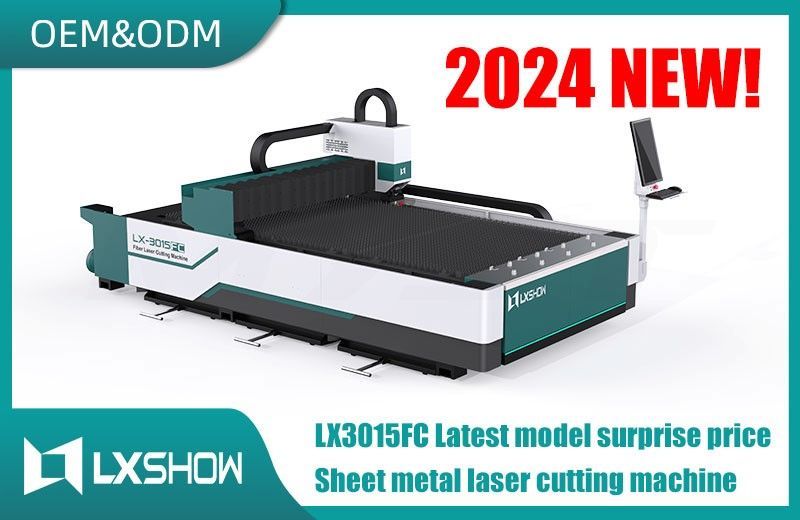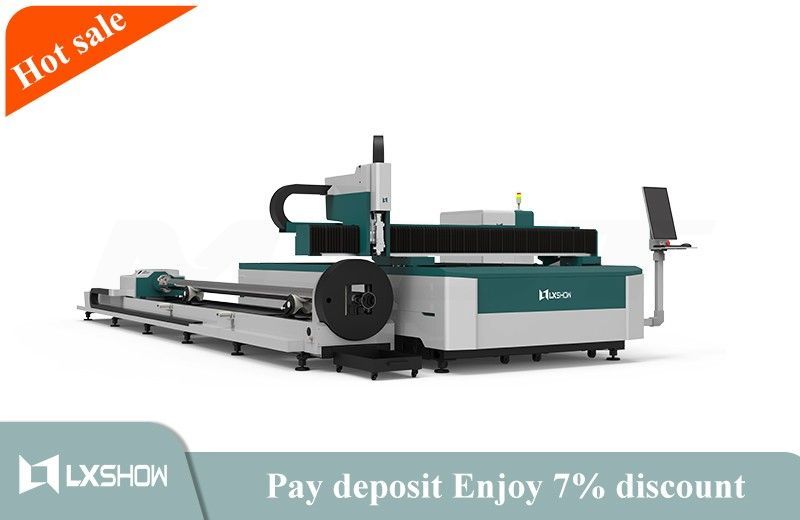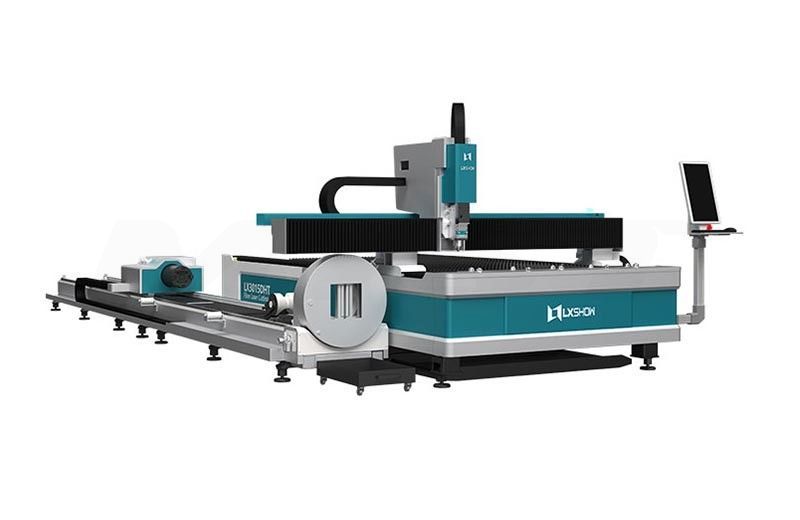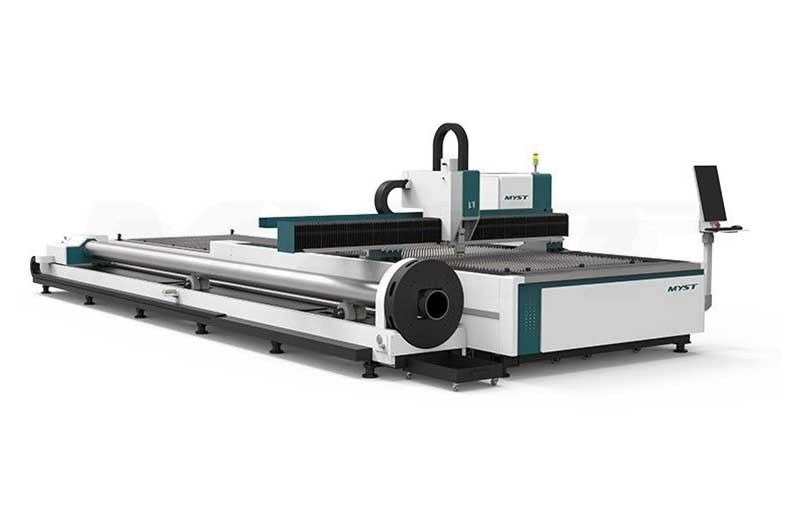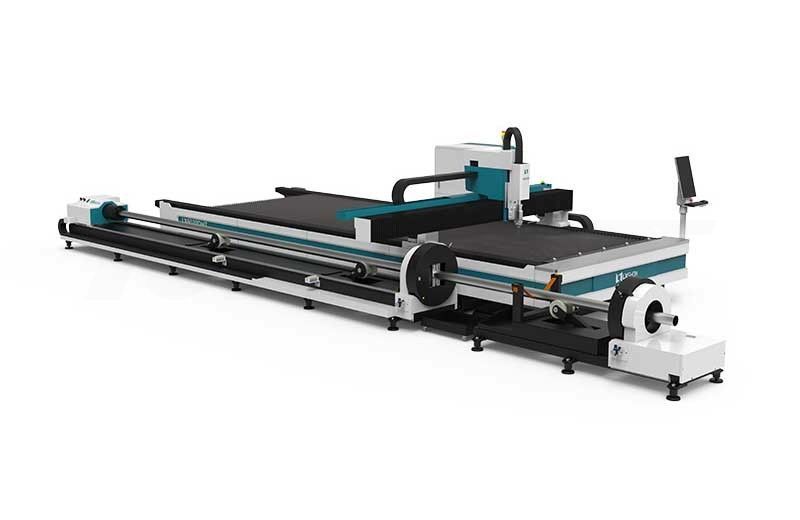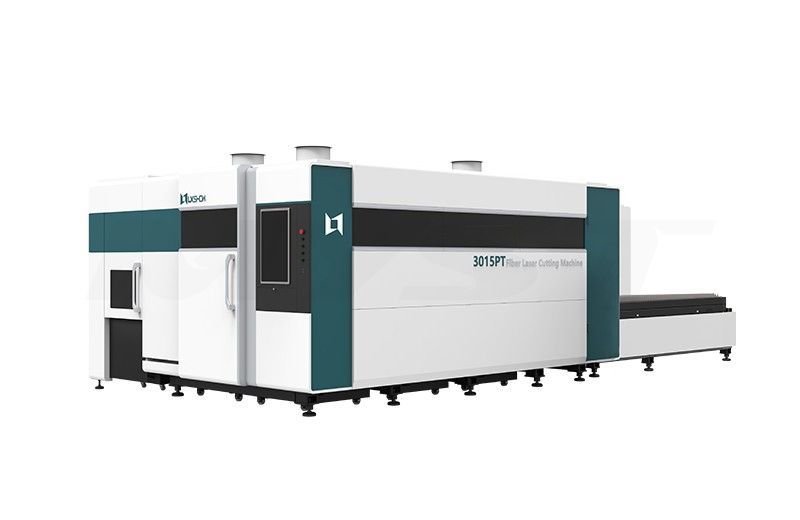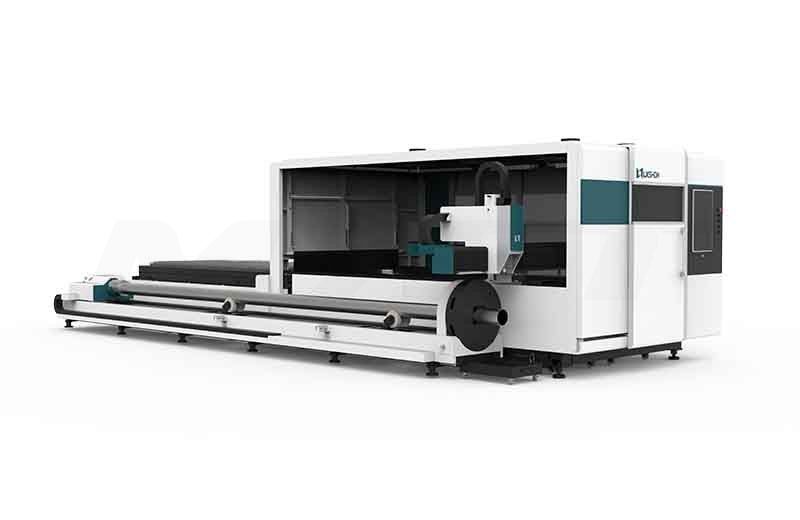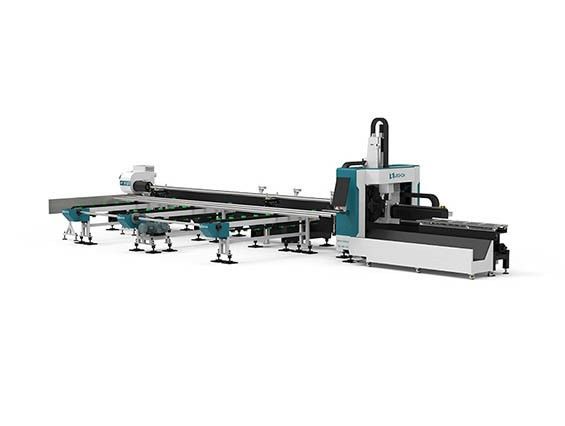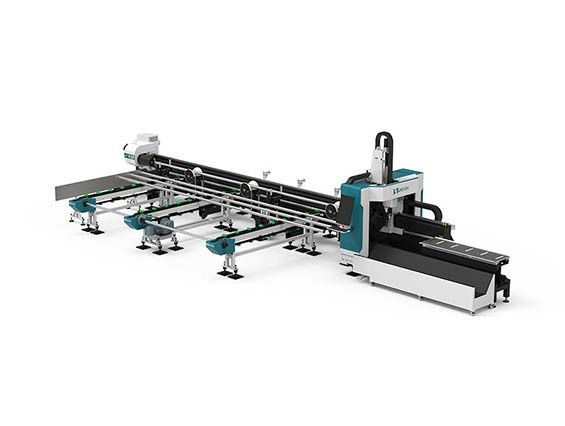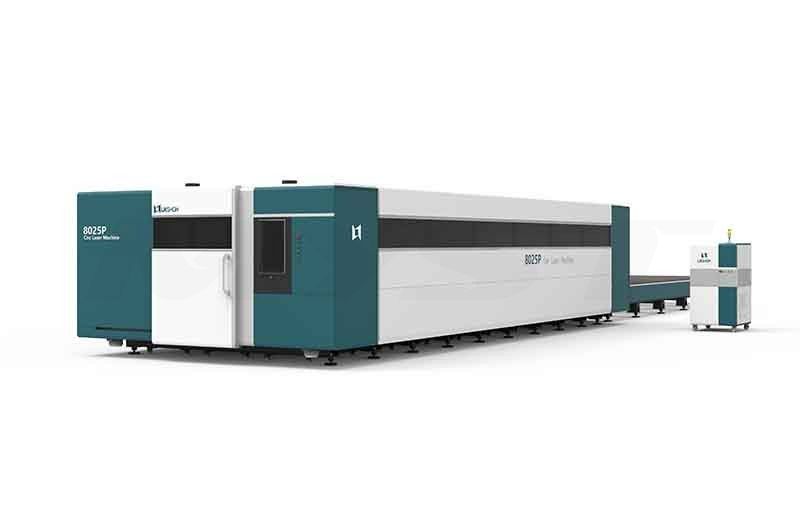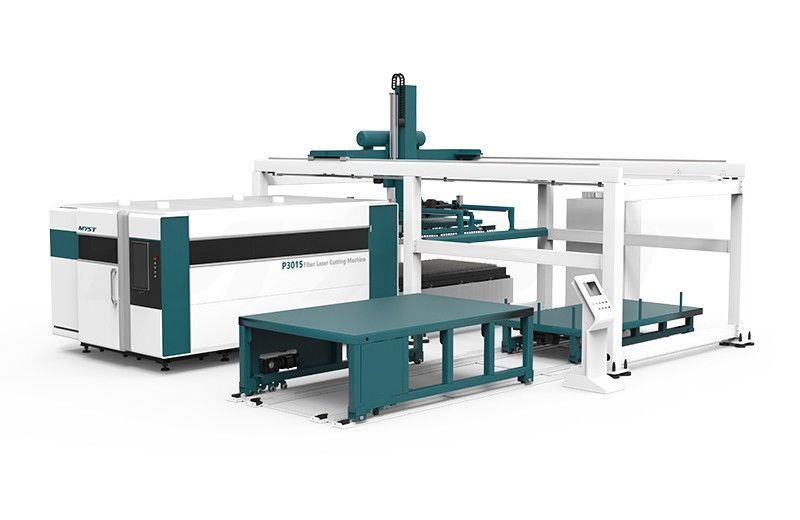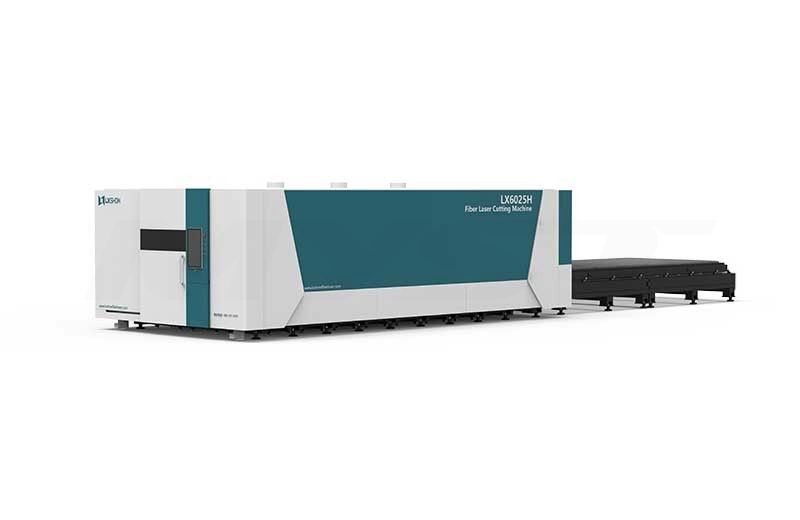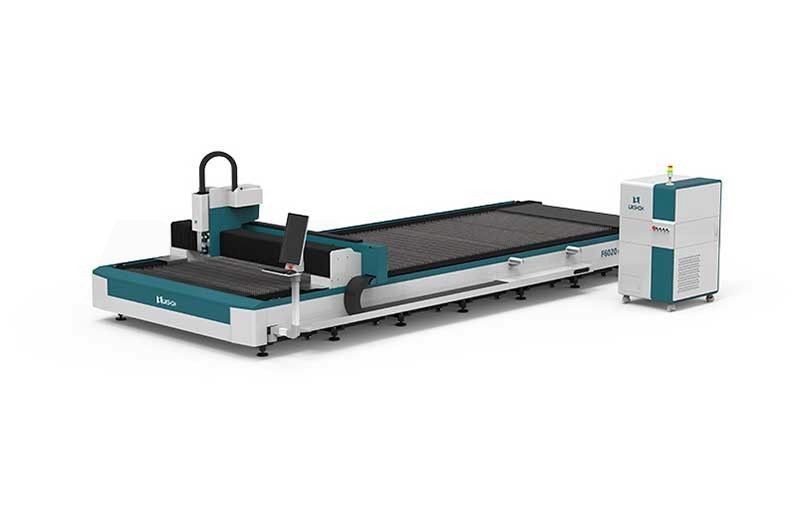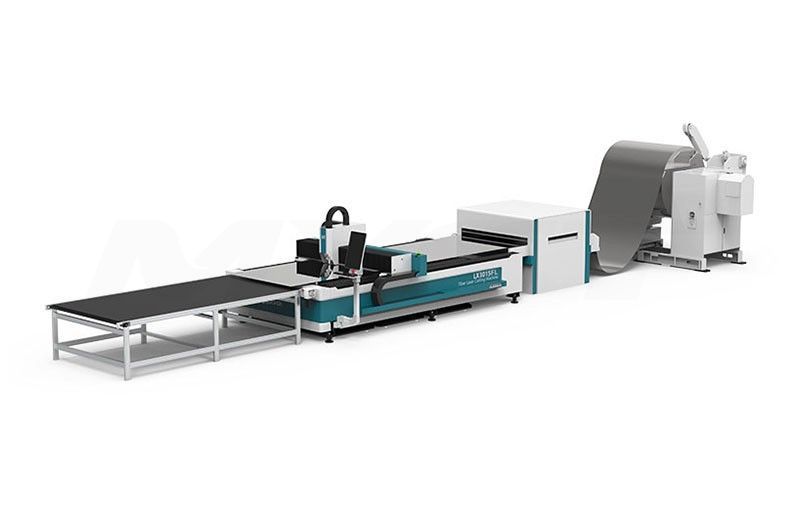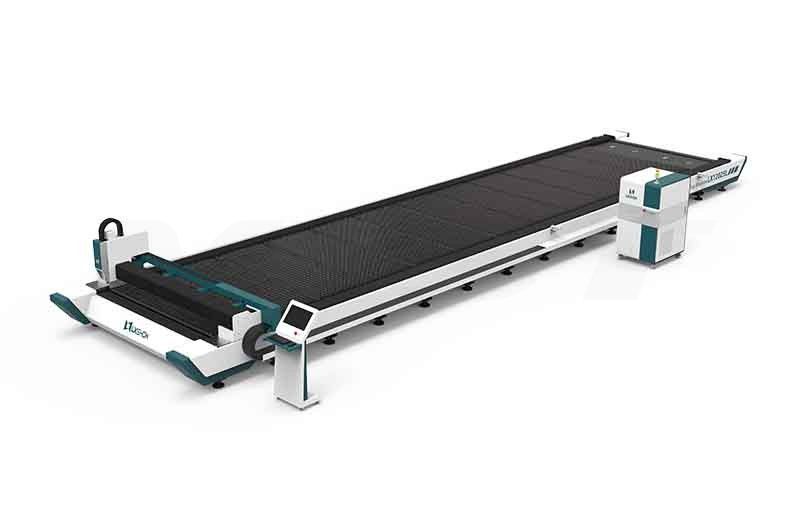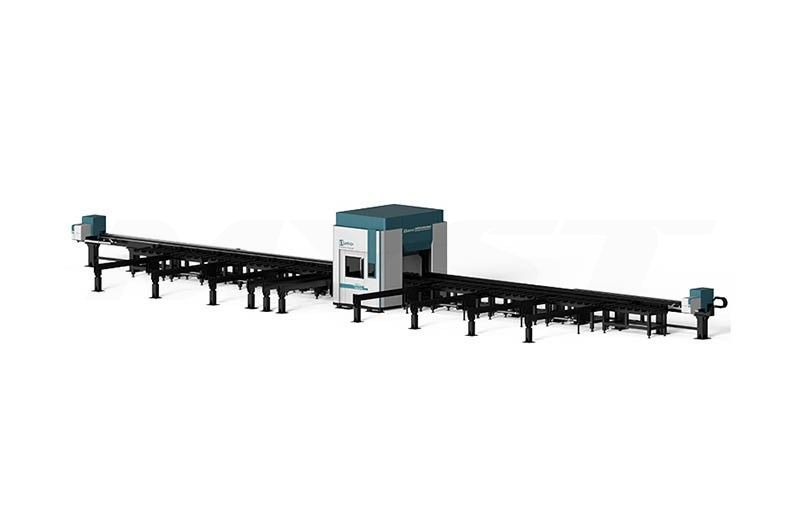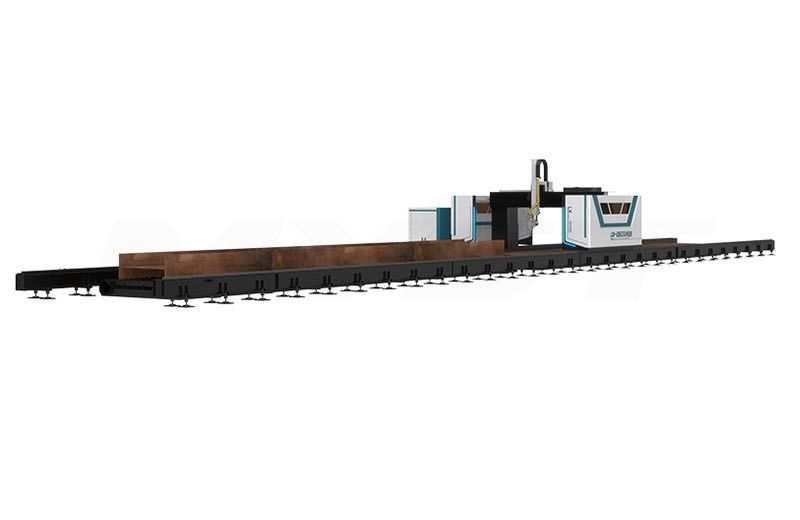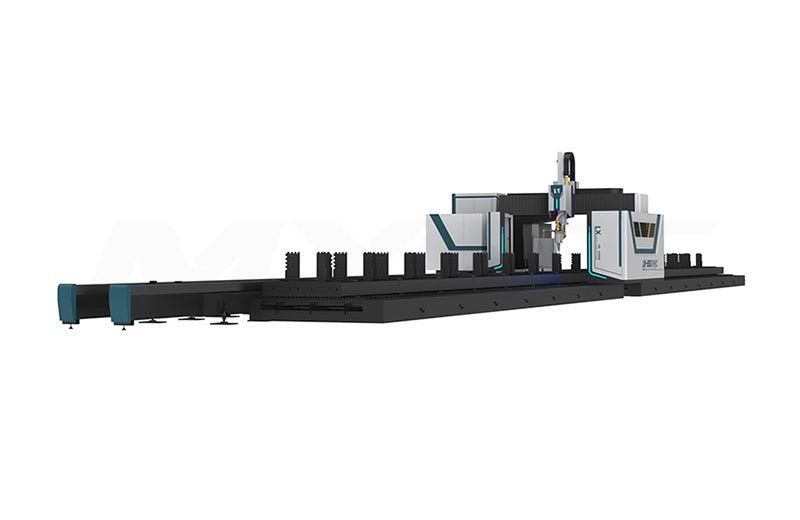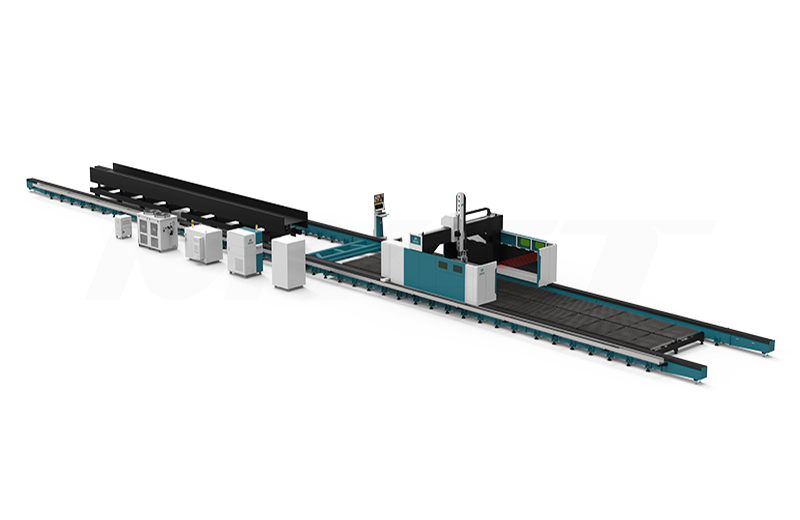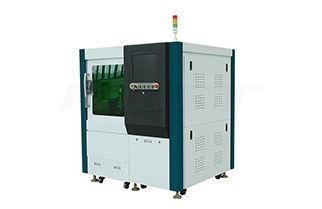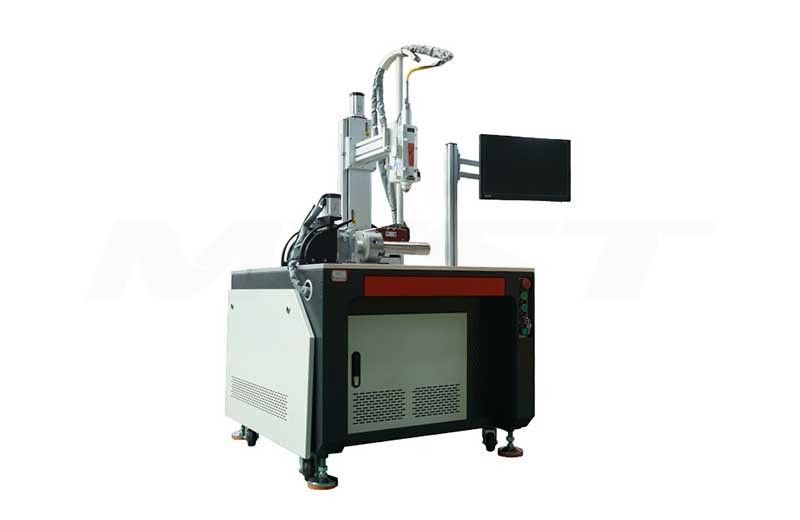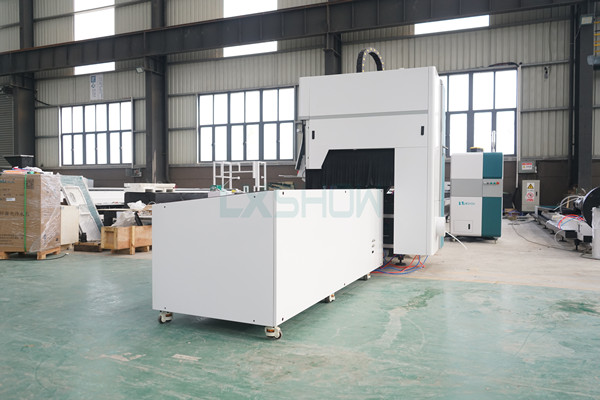
Most metal fabricators have a strong understanding of what fiber laser cutting technology has done for flat sheet processing, but just what has the fiber laser done for tube cutting? Quite a bit, actually.
How They Work
Some things are quite noticeable. The laser “generator” on a fiber laser is much smaller when compared to a traditional CO2 resonator. In fact, the fiber laser is created by banks of diodes that are put together in a briefcase-size module that can range in power from 600 to 1,500 watts. Multiple modules are spliced together to create the final powered resonator, which is typically the size of a small filing cabinet. The light generated is channeled and amplified through fiber-optic cable. When the light exits the fiber-optic cable, it is the same that is was upon being generated with no loss of power or quality. It is then adjusted and focused for the type of material to be cut.
The CO2 resonator is much larger and requires more energy, as electricity is introduced to a combination of gases to produce the laser beam. Mirrors help the light gain in intensity, preparing it to exit the resonator. After exiting the resonator, the beam must travel through a path comprising several cooled mirrors until it reaches the lens. This travel causes a loss of power and quality in the laser beam.
Efficient
Because of the amount of power required to create a CO2 laser, it is less efficient and has a much lower wall plug efficiency when compared to a fiber laser. It follows that the large chillers required for the CO2 lasers need more overall power too. Given the fiber laser resonator's wall plug efficiency of more than 40 percent, you are not only using less power, but also less of your in-high-demand floor space.
Beam Diameter
Some things aren't quite as evident until you take a closer look at a fiber laser in operation. Because its beam diameter is often one-third the size of a CO2 beam, a fiber laser has a greater power density than a CO2 laser beam. Not only does this allow the fiber to cut faster, but it also allows it to pierce faster. This smaller beam size also gives the fiber the ability to cut intricate shapes and leave sharp edges. Imagine cutting a company logo out of a tube when the spacing between the logo's letters is 0.035 inch; a fiber can make that cut, while a CO2 laser can't.
Wavelengt
Fiber lasers have a wavelength of 1.06 microns, which is 10 percent smaller than that of a CO2 laser beam. With its much smaller wavelength, the fiber laser produces a beam that is much more easily absorbed by the reflective material; a CO2 laser is much more likely to reflect off the surface of these materials. Because of this, fiber laser cutting machines can cut brass, copper, and other reflective materials. It should be noted that a CO2 laser beam that reflects off the material can not only damage the machine's cutting lens, but also the entire beam path. Using a fiber-optic cable for the beam path removes this risk.
Maintenance
Of course, the fiber laser doesn't need as much attention in terms of maintenance. It doesn't require mirror cleaning and bellows checks that a CO2 laser cutting machine needs. As long as it gets clean chiller water for cooling and the air filters are routinely replaced, the fiber laser itself is free of preventive maintenance.
Allow for redundancy
Another consideration is the fiber laser's briefcase-sized modules—they allow for redundancy. If one module has a problem, the resonator doesn't shut down completely. The fiber laser is redundant in a way that the other modules can produce more power temporarily to support the down module until repairs can be completed—which, by the way, can be done in the field. Other times the fiber resonator can continue producing reduced power until repairs can be made. Unfortunately, if a CO2 resonator has an issue, the entire resonator is down, not just in a reduced-power mode.
Materials
At one time many thought that fiber lasers could be used only for thin materials. The CO2, with its larger wavelength, created enough kerf during the cutting of thick materials that enough space was allowed for material removal; the fiber laser couldn't produce the same kerf or results with thicker materials. But that has been addressed in recent years with collimating technology that can produce a wider fiber laser-generated beam that creates materials separation and room for material removal in thick materials. And since the beam width is switchable, the machine can use the narrower beam to process thin materials, which allows for faster processing of different-sized materials on the same fiber laser cutting machine.
Cutting Speed VS Time
You may have noticed that we haven't discussed cutting speed yet. It is possible to cut up to 500 inches per minute on a tube, but that's not always realistic. In laser tube cutting, the real focus should be on how long it takes to load a tube, index it so it's in the right position for cutting, pierce and cut it, and unload the part. It's more about part-processing time with laser tube cutting machines, not cutting speed.
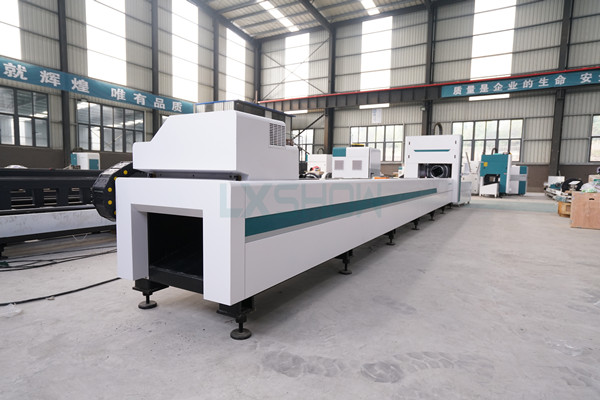
LXSHOW LASER LX82TS is a product specially designed for sheet metal laser cutting machine. It has stronger cutting ability and higher cutting precision. Do you want to know more about it? Contact us now!








